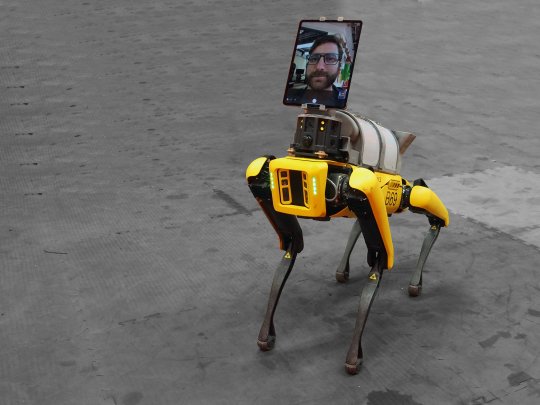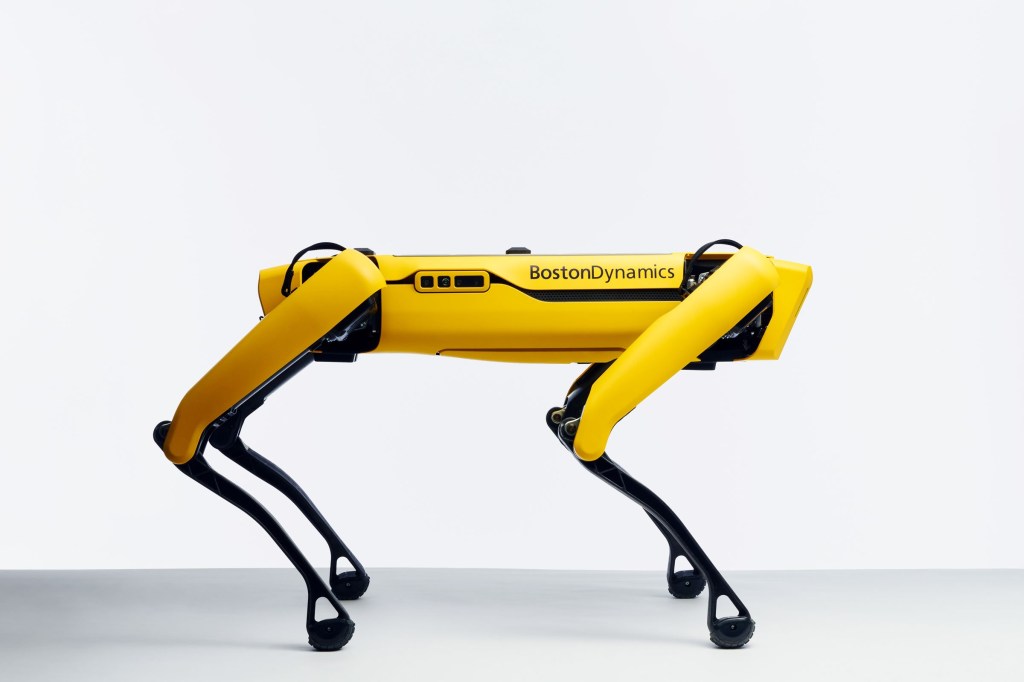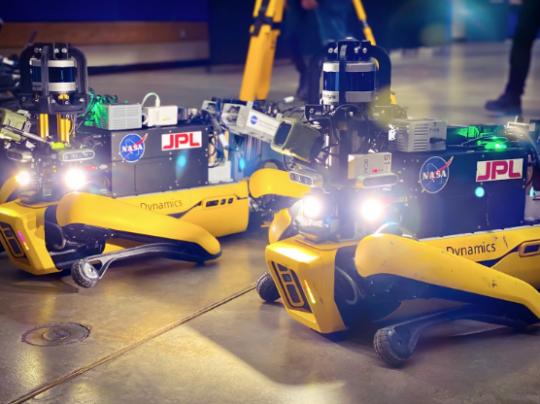
Boston Dynamics Robot Dog Is For Sale To Public: Life Meets The Jetsons
After years of seeing Spot the Boston Dynamics robot dog online, in commercials, and maybe even in use, you can now buy one for yourself. Yes, the Boston Dynamics robot dog is for sale to the public. Just pony up $74,500 and give BD six-to-eight weeks for delivery. BAM! You’ve got a robot dog. Life meets The Jetsons. While you may or may not have fantasized about having your very own robot, there are some real, practical, even life-saving uses for Spot.
Boston Dynamics robot dog has already been used at hospitals, in agriculture, and for police work

Those first adopters will mostly be “developers eager to explore how flexible mobile robots can be adapted for tasks ranging from industrial inspection to entertainment.” Spot has already been involved in programs at hospitals, in agriculture, and for police work. BD says the many uses already found for Spot to do include, “Inspect dangerous, inaccessible, and remote environments, automate data collection on your site, carry payloads on unstructured or unknown terrain.”
Until now you could only lease a Spot robot. If BD didn’t like what you were doing or how you were using Spot they could take it away. But now a $1,000 down payment will get you in line to own one.
Spot has been utilized to herd sheep in New Zealand
It has already been utilized for ways to minimize human exposure to the COVID-19 virus. At one Boston hospital Spot robots communicated with staff and patients through iPads and two-way radios. The staff could evaluate patients from afar, minimizing exposure. Currently, technicians are working on programs for Spot to measure body temperature, respiratory rate, pulse rate, and oxygen saturation. On a lighter note Spot has been utilized to herd sheep and collect agricultural data in New Zealand.
From the privacy of your own smartphone or computer, you can bring up feeds from the myriad of cameras located on Spot’s body. Armed with that info you can remotely control Spot to do quite a lot. In robotspeak you can use it for the “Three Ds.” The Three Ds are doing dull, dirty, or dangerous work.
Spot comes with attachments including a 360-degree camera, and BD is working on a robotic arm. There is also a software development kit to customize the robot’s behavior and enhance its understanding of the environment around it. Owners can fashion computer vision models for detecting landmarks where it is used.
The robot dog is at its best exploring environments humans should avoid

Initially, BD thought that Spot would be best utilized with humans in close quarters. But through an early adopter program, it determined the robot is at its best exploring environments humans should avoid. That includes mines and nuclear power plants. If Spot can avoid a power plant shutting down for a day the savings could be $1 million or more. That makes the price inconsequential is cases like that.
Monitoring progress at a job site or monitoring a process or problem remotely could also save the costs of buying a Spot. BD’s fear is that as sophisticated as the robot is its functions will be limited by the owner’s understanding of what it can do. That a much cheaper solution is out there for a machine like Spot that can do so much.
In some ways, Spot goes well beyond what the cartoon The Jetsons foretold. Afterall, LeRoy’s dog Astro was only a real dog.



